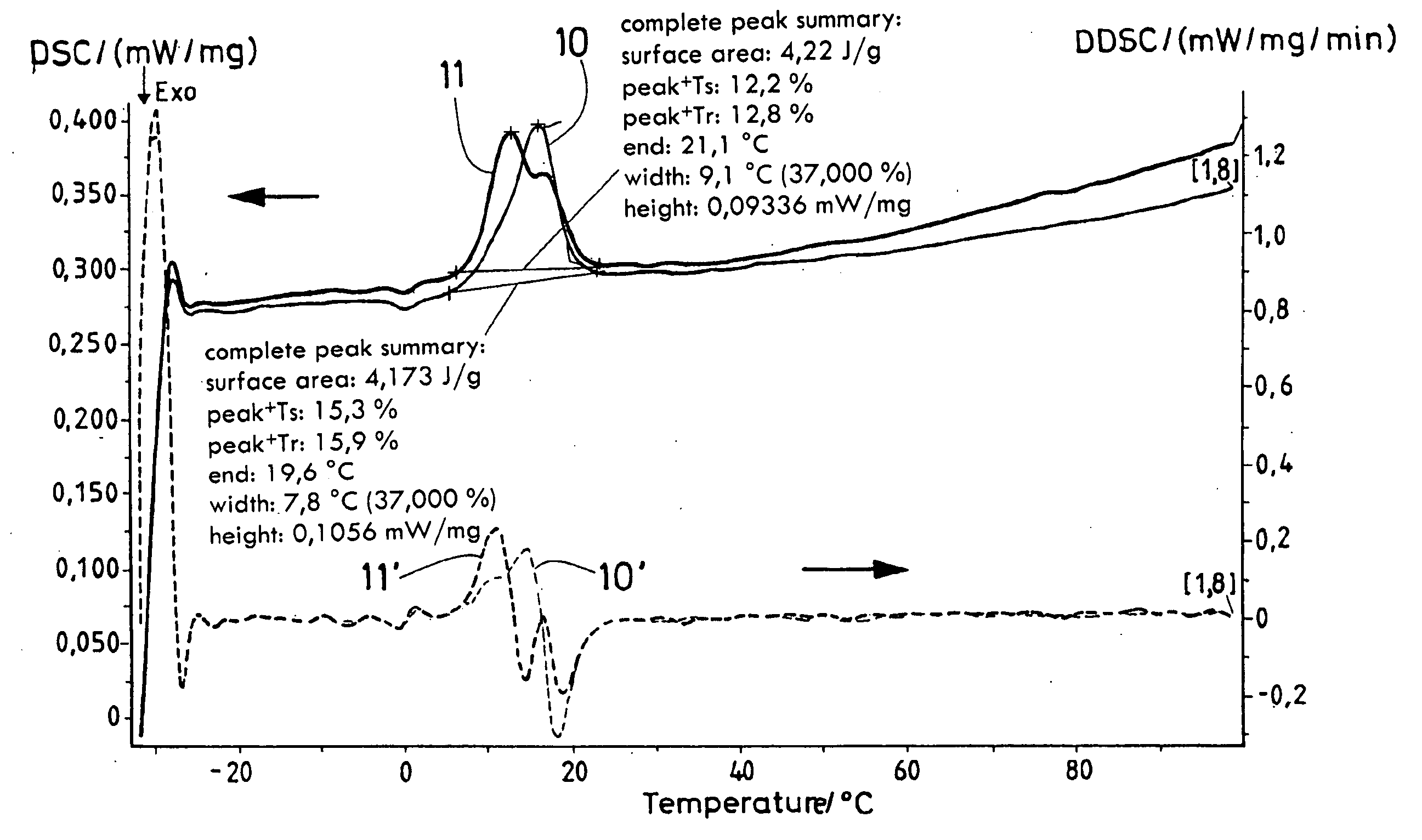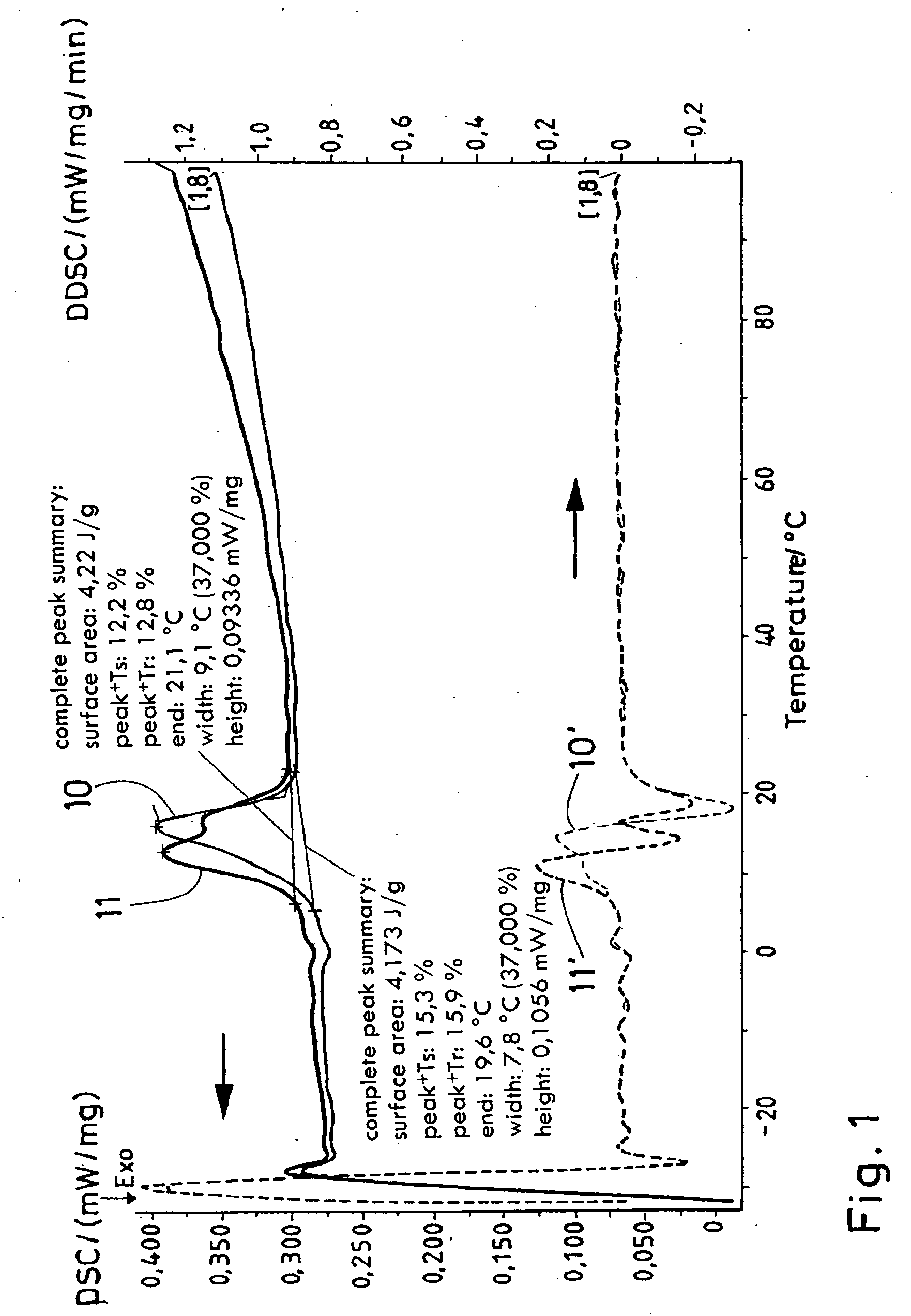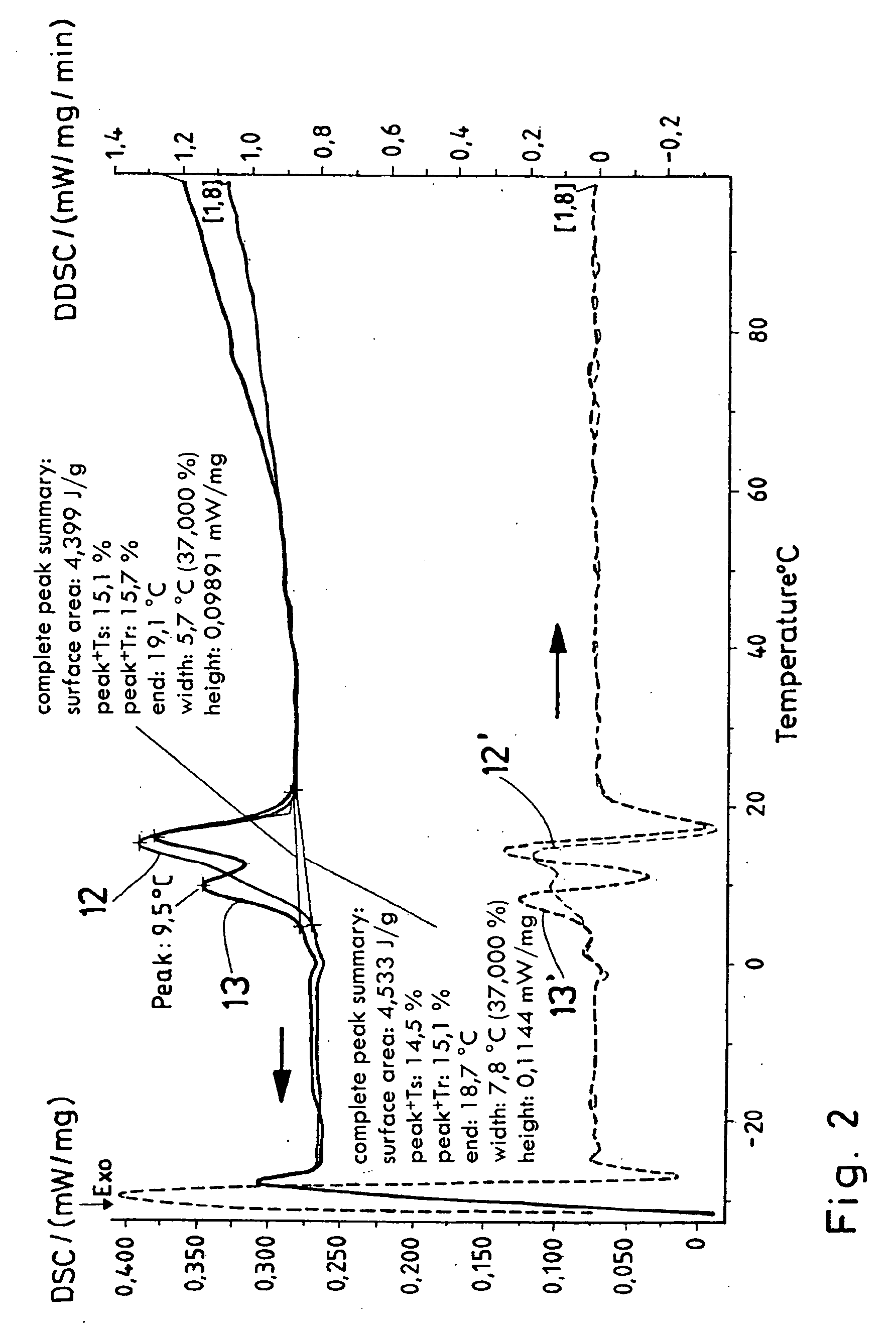Process for producing a polymer membrane, and polymer membrane
a polymer membrane and polymer technology, applied in the direction of catalyst activation/preparation, metal/metal-oxide/metal-hydroxide catalyst, fatty acid chemical modification, etc., can solve the problem of limited transport to a catalyzer, inability to selectively hydrogenate oil as viscous fluid, and usual heterogeneous metal catalyzers, etc. problems, to achieve the effect of high oil flow
- Summary
- Abstract
- Description
- Claims
- Application Information
AI Technical Summary
Benefits of technology
Problems solved by technology
Method used
Image
Examples
example k1
[0055] 2% noble metal (Pd, Pt) is applied onto or into Al2O3. The given percentages, insofar as not otherwise indicated and as they do not concern material or substance components, are weight percentages. 170 mg PdCl2 or 250 mg H2PtCl6 were dissolved in 50 ml thinned HCl (PdCl2) or deionized H2O, and 1 g aluminum dioxide (MR 70, Martinswerk) was suspended in the salt solution with strong stirring and stirred for at least two hours. The suspension was evaporated at the Rotavapor, was dried for two hours at 80° C. and was calcined for 9 h (heating rate 3.6° C. / min) at 450° C. Yield 90-95%.
example k2
[0056] 2% Pt was applied onto or into Al2O3 from a neutralized solution. 180 mg H2PtCl6 was dissolved in 4 ml H2O, 2.5 g Al2O3 (Martoxid MR70), was ultrasonically suspended in 4 ml H2O and both were combined. The suspension had a pH value of 1.2 (measurement with pH-electrode) and with diluted NH3 (1%) the pH value was adjusted to 9. This was stirred for 0.5 h and then evaporated. One half of bright yellow powder (K2a) was dried and calcined (see example K1) and the other half was chemically reduced with aqueous-methanolic sodium-boron hydride solution (K2b), was neutrally washed and dried at 110° C.
example k3
[0057] 2% Pt was applied onto or into Al2O3 from non-aqueous solution. 2 g Al2O3 was suspended in 4 ml THF by stirring, 100 mg H2PtCl6 was dissolved in 4 ml THF and dripped into the Al2O3 suspension. The mixture was stirred 0.5 h and then evaporated. One half of the bright yellow powder (K3a) was dried and calcined (see example K1), the other half was reduced with NaBH4 (K3b) and was neutrally washed and dried at 110° C.
PUM
| Property | Measurement | Unit |
|---|---|---|
| Temperature | aaaaa | aaaaa |
| Temperature | aaaaa | aaaaa |
| Pressure | aaaaa | aaaaa |
Abstract
Description
Claims
Application Information
 Login to View More
Login to View More - R&D
- Intellectual Property
- Life Sciences
- Materials
- Tech Scout
- Unparalleled Data Quality
- Higher Quality Content
- 60% Fewer Hallucinations
Browse by: Latest US Patents, China's latest patents, Technical Efficacy Thesaurus, Application Domain, Technology Topic, Popular Technical Reports.
© 2025 PatSnap. All rights reserved.Legal|Privacy policy|Modern Slavery Act Transparency Statement|Sitemap|About US| Contact US: help@patsnap.com



